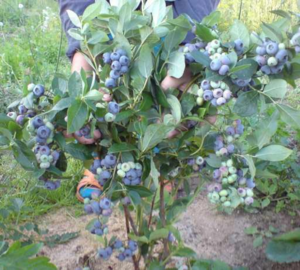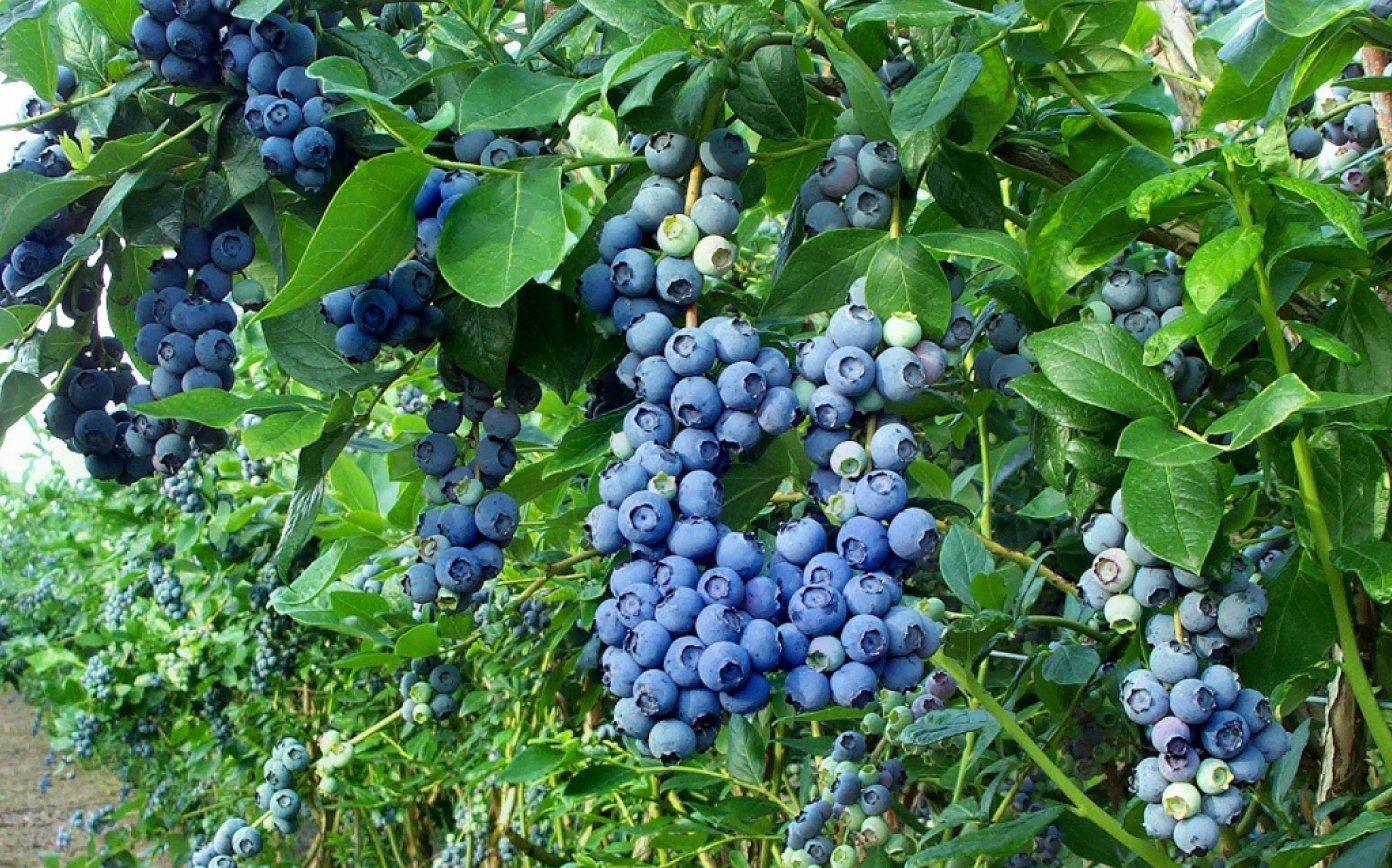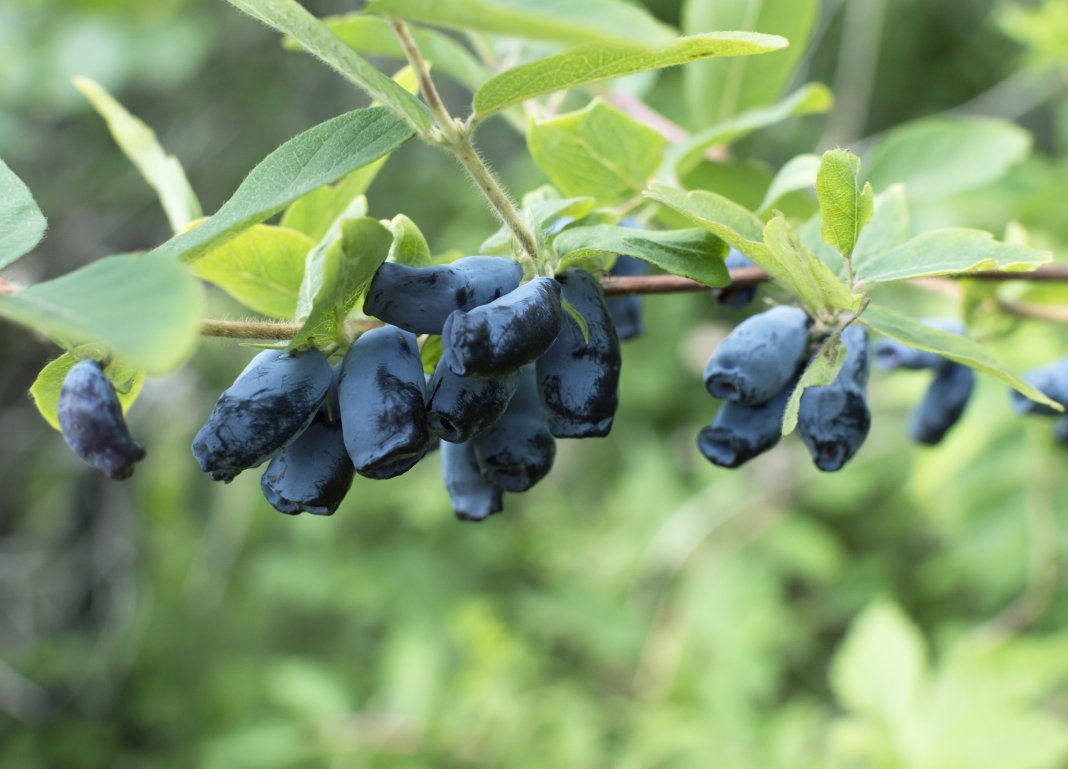High-quality pruning is the key to the health of the bush and a good harvest of large berries. The event consists of several stages: bush formation, thinning, sanitary and anti-aging pruning. Each has its own terms and rules.
Content
What you need to know when you start pruning blueberries
To understand the principle of pruning blueberries, you need to know the structure and development of this culture. An adult bush consists of shoots of different ages. Fruiting occurs on two-year-old branches and older, or rather, on their lateral branches. Old branches, having fruited 4–5 years, are inferior in yield to young ones. The bush renews itself, throwing out new replacement shoots every year.
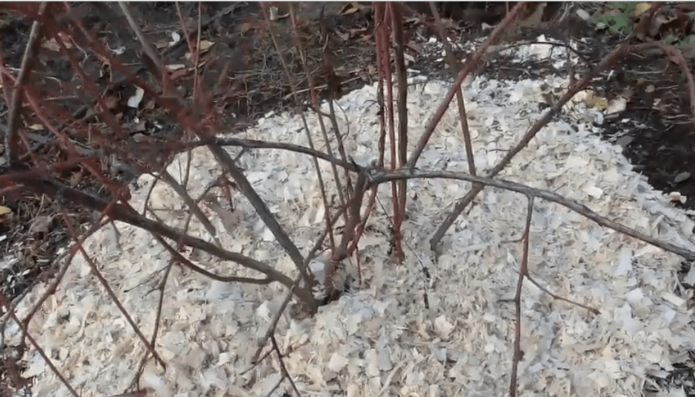
The blueberry bush consists of fruiting lignified branches and annual straight replacement shoots with a lighter bark
Young one-year-old stems can be recognized by the smooth bark of a bright color, there are no twigs of the second order, and 2-3-year-olds are already lignified and have branches. On the oldest stems, the lateral fruit branches are short, densely arranged, small berries grow on them. And on younger and more productive branches, these shoots are longer, which means they are stronger, the harvest on them will be richer. As a rule, berries are not tied at all up to a height of 30–40 cm above the ground.
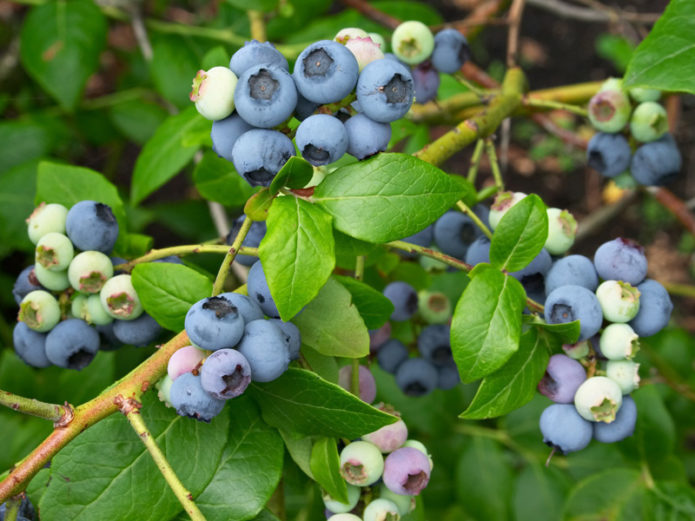
Bunches of blueberries are formed on the tops of the side branches, the longer and farther from each other, the larger the berries
In order for the harvest to be richer, and the fruits to have a beautiful presentation, on industrial plantations in the bush, about 10 fruiting branches and 3-4 annual replacement shoots are left. In home gardens, blueberry bushes are often grown more densely, more berries grow on them, but they are smaller. Knowing all these nuances, you can already understand which stems and twigs need to be removed when shaping, thinning or rejuvenating a blueberry bush.
Blueberry is a branchy shrub up to 1 m high (varietal plants are higher). The stem is almost completely woody. The appearance of blueberries and blueberries is very similar, but the berries of the first are larger:https://flowers.bigbadmole.com/en/yagody/sorta-golubiki-sadovoy.html
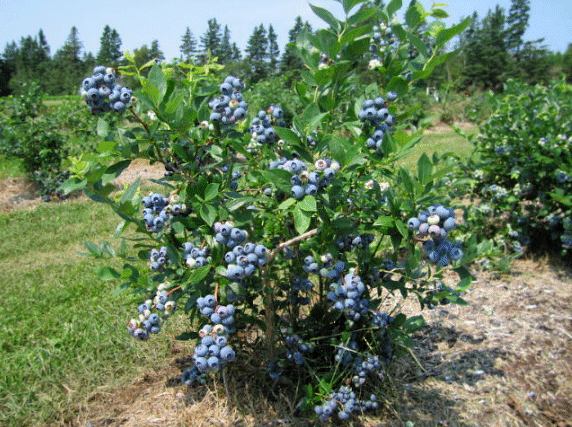
By adjusting the number of stems in the bush, you can grow a lot of small berries or fewer, but large
Pruning blueberry seedlings in the second year after planting
Blueberry seedlings are sold at the age of 1–2 years. This means that by the next season after planting there will be branches with fruit branches and young replacement shoots in the bush. Blueberries are already capable of giving back the first few berries, but the main goal during this period is not to harvest, but to form a strong bush, on which a richer harvest of next year will be laid.
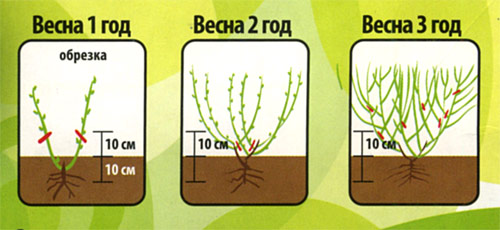
An approximate scheme for pruning young blueberry bushes: 1 year - the shoots are shortened for branching, 2 years - thickening and growing inside the bush are removed, 3 years - thinning pruning continues, but now second-order branches have also been added
With no regrets, delete:
- all shoots that grow horizontally spread along the surface of the earth;
- twigs and twigs that go inside the bush;
- the tops of two-year-old shoots, covered with frequent and short twigs of the second order; shorten them to a strong shoot growing vertically.
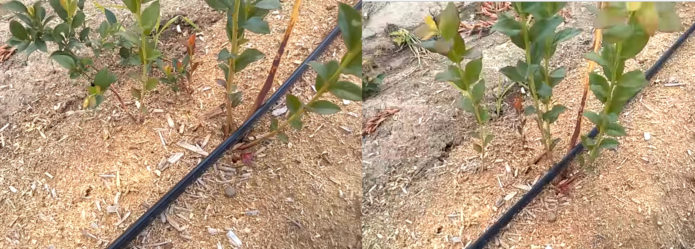
One and the same blueberry bush before and after pruning: removed two-year-old shoots with branching, inclined to the ground, only young and upright growing ones remained
It is better to leave only 3-4 shoots in the bush, but even, tall and thick, than many gnarled and thin branches with the first berries. The essence of pruning at the beginning of the development of the bush is to choose the strongest stems that can give large lateral growths, which means large berries. Remove all twigs and branches that interfere with the implementation of this goal, draw on juices, shade, etc.
Video: formative pruning of blueberry seedlings in summer
As for the timing of pruning, it is usually a dormant period when there is no sap flow, that is, after leaf fall and before bud break. But young 2-3-year-old bushes can be formed in the summer in order to remove all unnecessary and provide the bush with more strength for the ripening of promising young shoots.
Ideal blueberry varieties for planting in various fields:https://flowers.bigbadmole.com/en/yagody/posadka-uhod-i-vyraschivanie-razlichnyh-sortov-sadovoy-golubiki-otzyvy.html
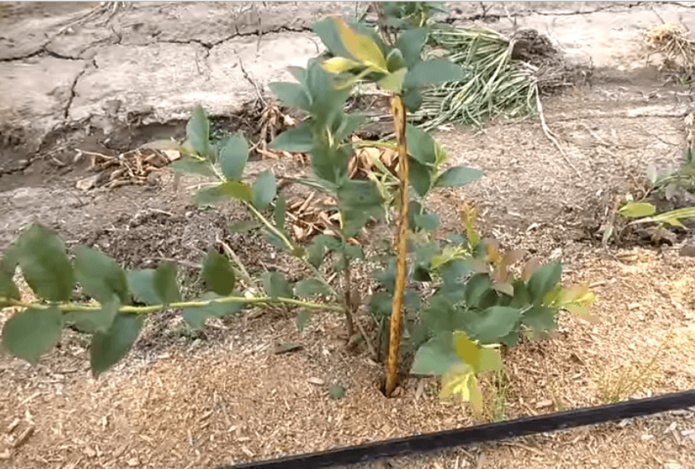
In summer, the growth of the current year is already visible, so you can remove the low, curved, growing to the side, then the rest will receive more nutrition
In the summer, you can already select the smoothest and highest replacement shoots and prune in their favor. In the absence of competitors, they will receive more power and light. The bush will be better ventilated, it will acquire immunity to diseases. Young shoots of the current year will have time to develop well, will be covered with bark by autumn, which means that they will winter safely and will not freeze.
When pruning trees, when shortening branches, the cut is made above the bud, directed outward - from the crown. The opposite is true for blueberries. The bush should consist of vertical branches, not horizontal ones. Therefore, you need to trim over the inner kidney.
Pruning a young fruiting blueberry bush
Shrubs aged 3-4 years are at the final stage of formation. Three-year-olds should consist of 4-5 fruiting lignified stems and 4-5 replacement shoots, four-year-olds - from 8-10 branches of different ages and 4-5 replacement shoots.

In the foreground is a 3-year-old bush after pruning: 4 shoots with fruit twigs and 5 young ones; in the background - a still uncut bush
Fruiting bushes, in comparison with seedlings, are denser. It is more difficult to understand the interweaving of large and branched shoots, especially if they are covered with leaves. Therefore, the best pruning time is early spring or autumn, after leaf fall. In the southern regions and in Ukraine, pruning is done in winter. In the middle lane, in the north and in Siberia, the event should be timed to coincide with the spring in order to eliminate the consequences of a severe winter.
Video: pruning blueberries in winter (Ukraine)
Pruning fruiting blueberries consists of several steps:
- Sanitary pruning - Shorten frozen, blackened tops to healthy wood, remove those that are broken by heavy snow, dry and diseased ones. The latter can be recognized by the dark spots on the bark.
- Thinning - free the center of the bush. To do this, remove all low shoots, as well as branches growing inward, intersecting with each other. To a height of 30–40 cm, remove all knots on each shoot, that is, all stems in the lower part should have a bole, like a tree, without any branches.
- Formation - Cut out excess replacement shoots near the ground if there are more of them than necessary. Leave the thickest and tallest without signs of disease.
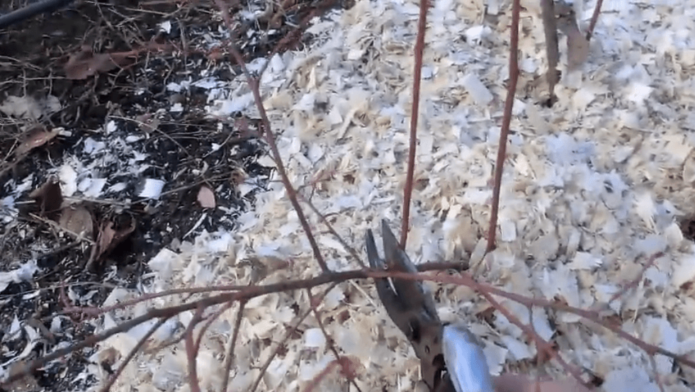
A horizontally growing branch can be converted to vertical growth if it is cut to a second-order shoot growing upwards
The side branches of the blueberry should be cut into a stump, not a ring like a tree. In shrubs, the stems and bark are thinner. Cutting into a ring, you risk destroying the entire branch or most of it.
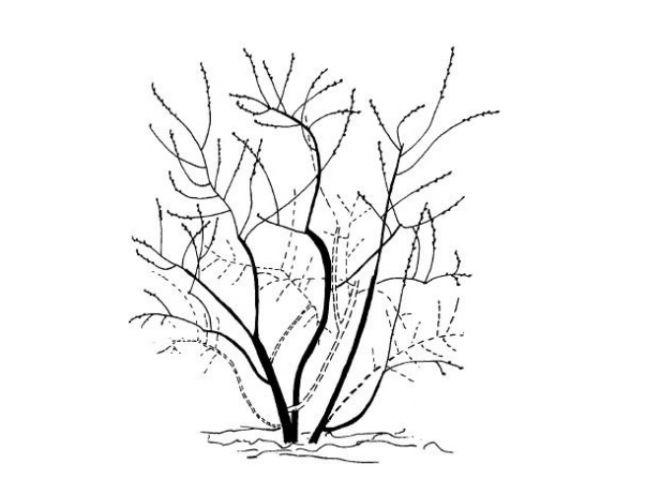
Scheme for pruning a fruiting blueberry bush: the strokes mark the branches to be removed, the buds are also drawn, that is, the places where the berries will appear
The cultivation of garden blueberries has recently become quite a popular activity. But since its seedlings are quite expensive and it is not always possible to find them, the question of independent reproduction of blueberries is relevant:https://flowers.bigbadmole.com/en/yagody/razmnozhenie-golubiki-sadovoy.html
After high-quality pruning, the bush must meet the following criteria:
- All shoots grow vertically upward.
- From the ground to knee level, there are no branches, twigs of the second order.
- Fruiting shoots are covered with twigs of the second order of optimal length - 15–20 cm, at least 10 cm.
- The stems do not touch, they stand at some distance from each other. As gardeners say, a bush (non-leafy) should be so sparse that a sparrow can fly through it.
Rejuvenating Blueberry Pruning
In well-tended gardens, blueberry bushes bear fruit for 30 years or more, but by the age of 5–6 their productivity decreases. You can restore it with anti-aging pruning. Old branches have one peculiarity - in the upper part they are overgrown with many short side branches. They say that the top becomes like a Christmas tree, small berries grow on it. However, strong vertical shoots often extend from the middle part of such branches. It is necessary not to miss the moment and make the branch transfer to this shoot, that is, shorten it, make a cut above it. If there are no strong growths on the branch, then cut it out entirely near the ground. Leave a young replacement shoot in place.
Video: anti-aging pruning to a strong vertical shoot in the fall
The so-called Christmas trees can also appear on young shoots. It is recommended to remove twigs of the second order shorter than 10 cm. This can be done in several ways: cut them off from the main branch, remove with part of the branch to a vertical strong shoot, and remove the old branch without strong growths entirely.
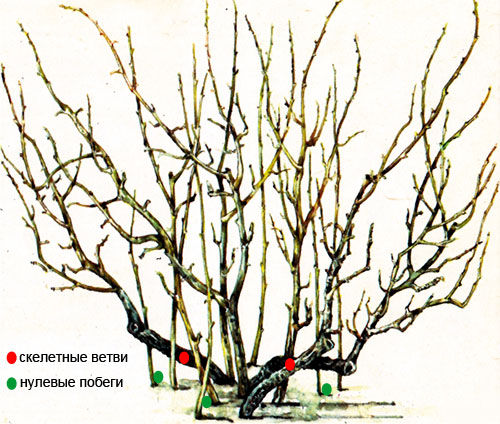
One of the schemes for rejuvenating the bush: branches older than 5 years are cut entirely from the ground, they are replaced with the same number of zero shoots, that is, those grown in the current year
If the bush is running, there is no good growth, then cut it to zero and provide the roots with constant moisture. Next summer you can start forming a new bush.
Features of pruning blueberries, depending on the variety, including tall ones
They are very popular with modern gardeners tall blueberry varieties... They develop a tall bush (up to 2 m), consisting of powerful shoots. The thickness of some reaches 3-4 cm. This means that you need a reliable tool for cutting, and sections with a diameter of more than 1 cm will have to be covered with pitch. If the bush seems too high to you, it is inconvenient to harvest, then in the summer, pinch the tops, at the right height.
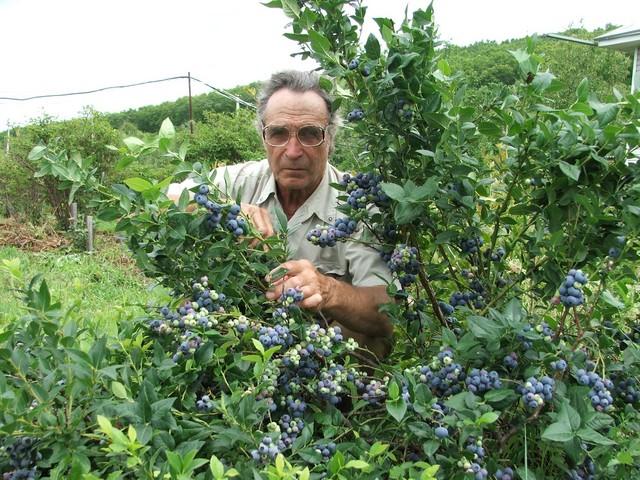
To trim tall blueberries, you will have to make more effort, but the yield of such varieties is higher
The rest of the pruning principles are the same. More important than the height of the bush is the blueberry variety. Some tend to build up vertical shoots. In this case, you need to thin out the center of the bush well. Others, on the other hand, produce many horizontal branches. Then your task will be to translate their growth into vertical shoots.
Video: pruning tall blueberries
The timing and methods of pruning blueberries depend on the goal pursued and the growing region. So, you can thin out in the summer, pinching more green twigs growing inside the bush and to the side, as well as weak replacement shoots.In the summer, they also do sanitary pruning, removing dry, broken and diseased branches. But the formation of a bush should be carried out when there is no foliage: in the southern regions - from autumn to spring, and in areas of risky farming - in spring.

